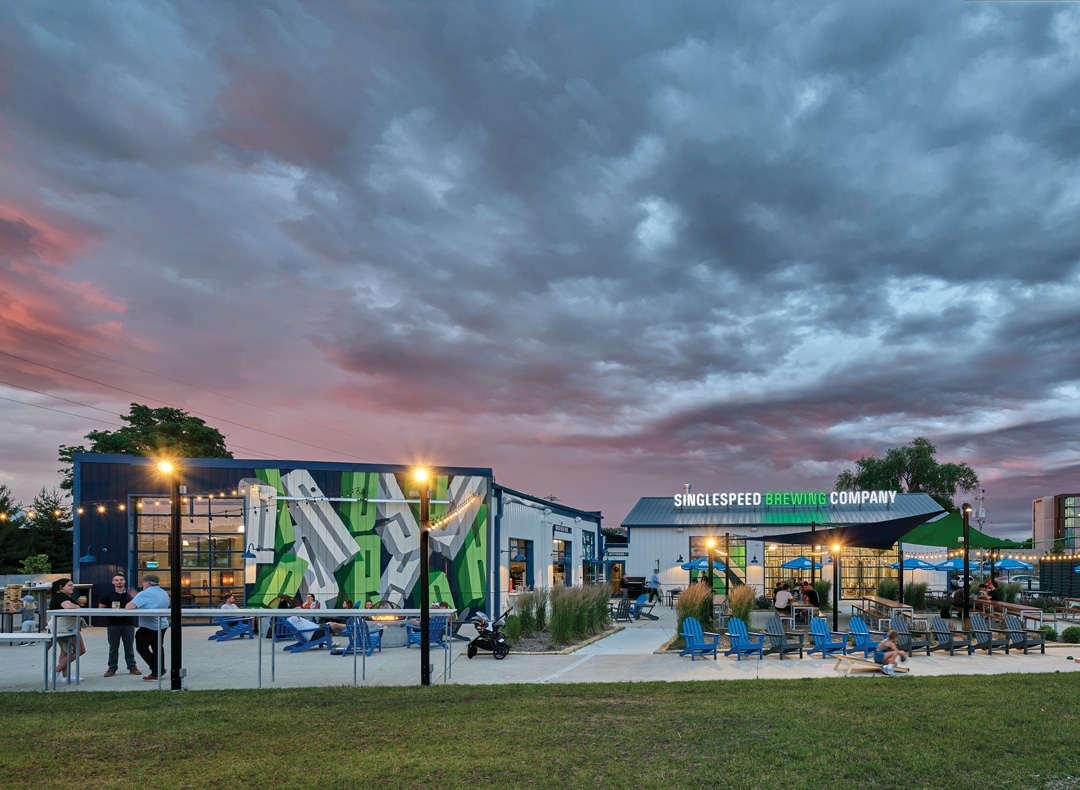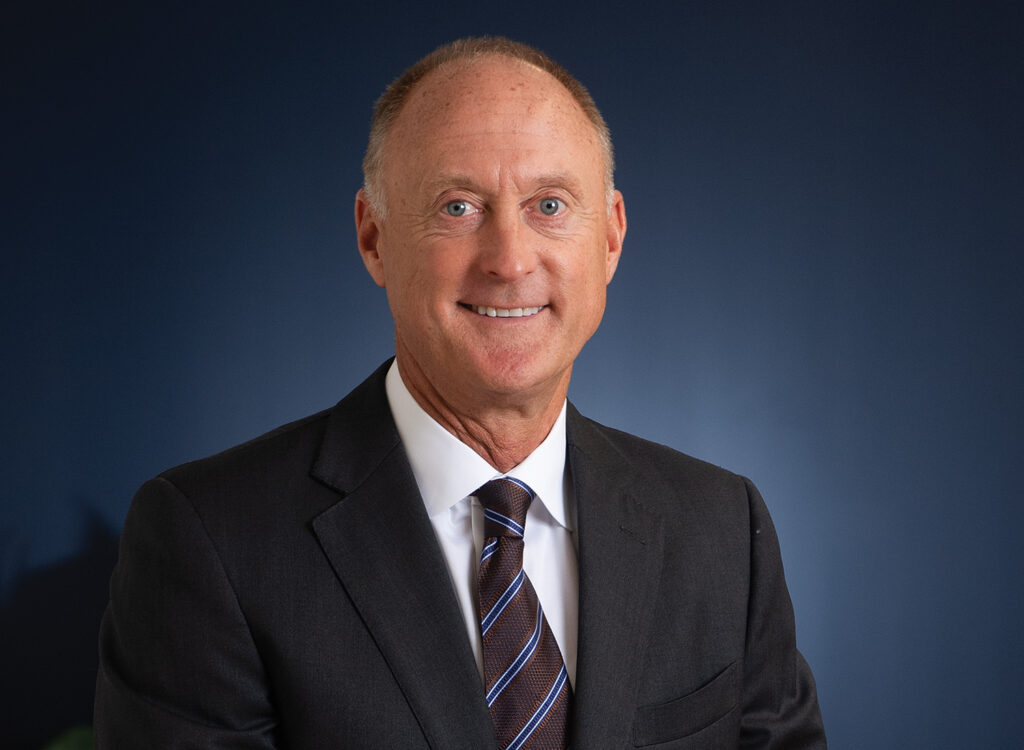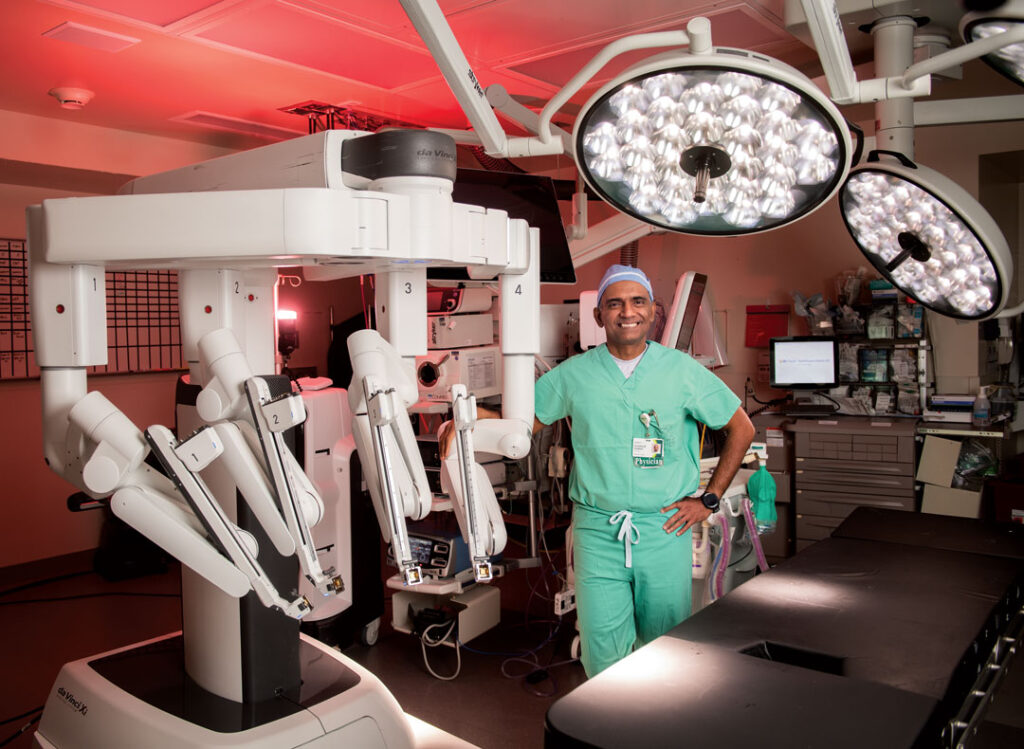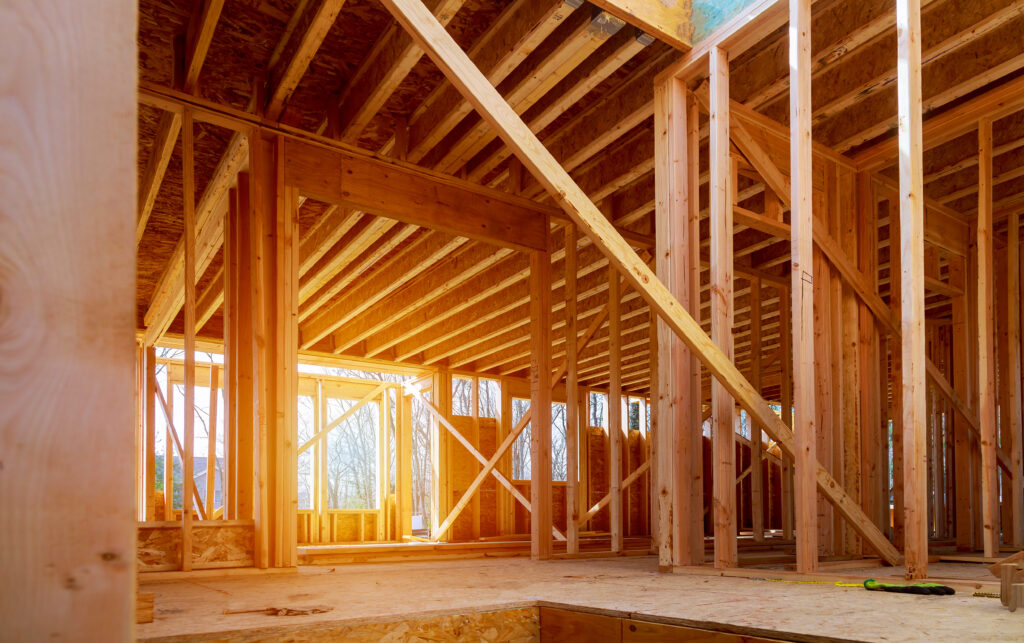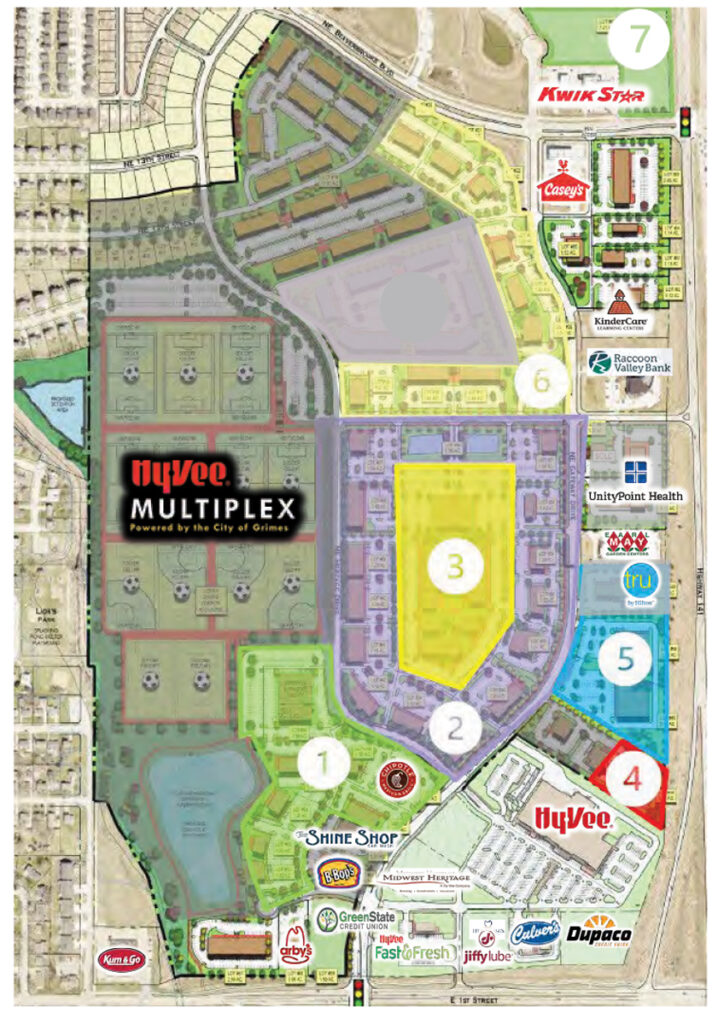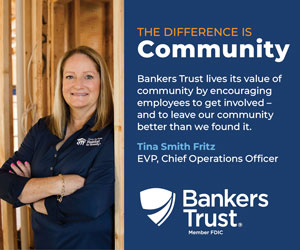A time to try new things
Employee wellness, technology and innovation focus of today’s architecture
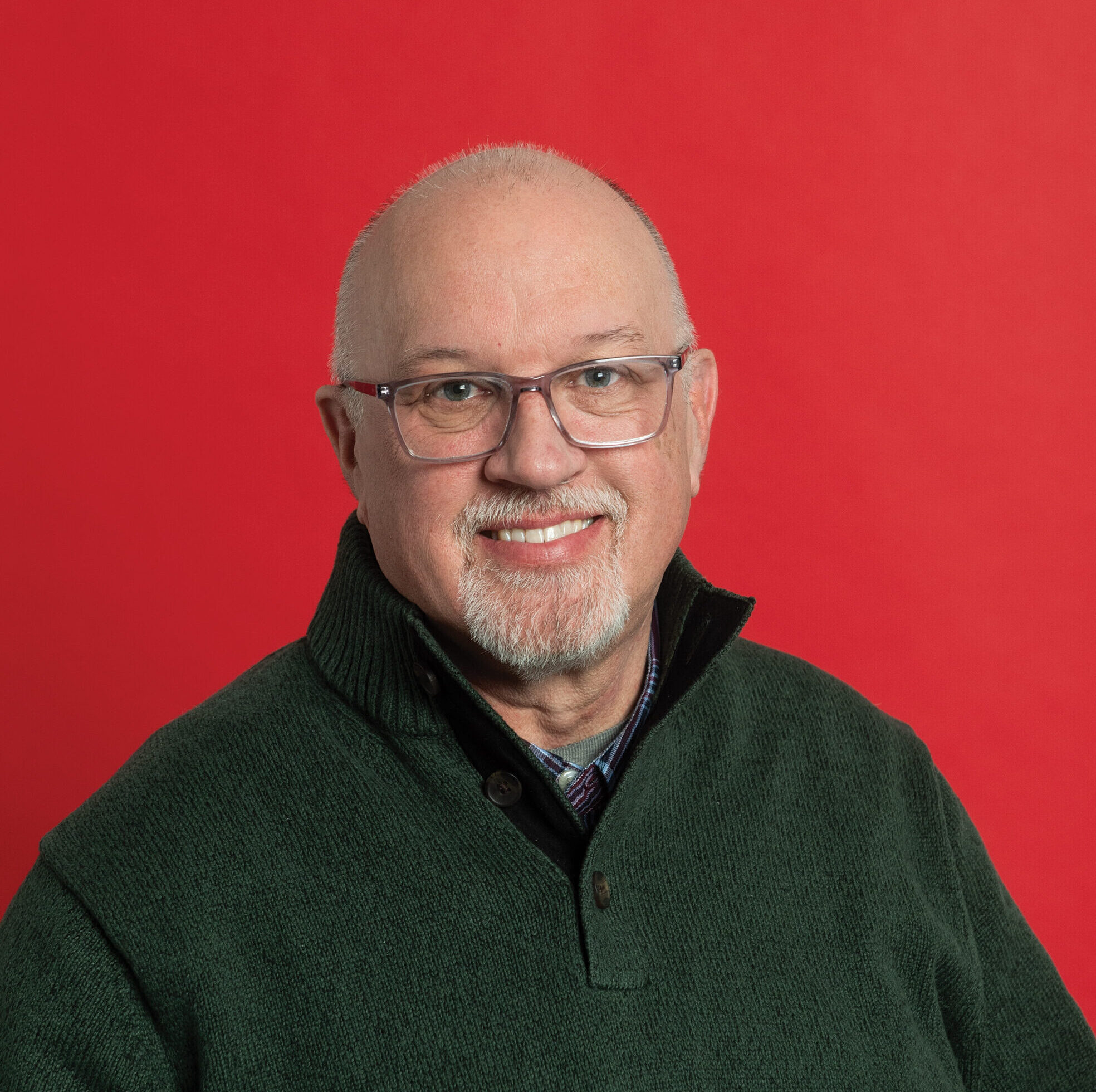
Michael Crumb Jul 5, 2024 | 6:00 am
11 min read time
2,605 wordsBusiness Record Insider, Real Estate and Development, Workforce DevelopmentWhat is happening inside the walls of architectural firms is often an indicator of what’s to come in real estate development and construction, so the Business Record reached out to leaders at the region’s architectural firms to learn more about what’s on their minds.
We asked questions about why conditions in Iowa and the Midwest might be stronger than in other areas of the country, what opportunities and challenges they see on the horizon and the trends they are seeing in their industry.
You will read responses from Michael Bechtel, a partner at Invision Architecture; Chris Trosper, director of real estate development with The Opus Group; and Austin Herndon, project manager at DLR Group.
Here is what they had to say about the trends and economic conditions driving architecture in 2024. Their responses have been lightly edited for clarity and brevity.
The AIA/Deltek Architecture Billings Index generally has shown softening conditions for architectural firms, with the Midwest and Iowa being the exceptions. What do you see as factors for stronger conditions here in Iowa than in other parts of the country?

Bechtel: While many states have businesses closing due to staffing shortages, many Iowa businesses have leaned into their Midwest work ethic and the various resources at their disposal. Iowa’s shorter-than-average “downtime” from COVID-19 was a result of an economy that never fully shut down. We certainly slowed down, but our recovery period was ultimately quicker and more efficient than having to restart from scratch.
For Invision in particular, our market sector diversification allowed us to maintain our staff and even grow over the last few years. With differing funding sources, those markets balanced one another when economic changes affected one particular market.
For example, increases in federal and state funding of school infrastructure have helped sustain and grow our K-12 and higher education markets. And even though Iowa’s health care system has experienced some restructuring and various slowdowns due to economic variables, health care projects have proceeded with smaller design and planning opportunities.

Trosper: The May ABI and the overall index are as low as it was at the end of the pandemic, with a significant drop of six points since April, but Iowa and the Midwest are continuing to see industrial and institutional inquiries.
Generally, Iowa and the Midwest have steady growth and are not as prone to boom or bust cycles. This is due in great part to the economy in Iowa having more significant exposure in agriculture, which provides additional market diversification to other industries. The Midwest also benefits nationally from a low cost of business in terms of wages, land prices and construction costs compared to many other states and regions. In addition, the skilled workforce and low cost of living make Iowa more competitive when times get tough.

Herndon: Iowa currently has a low unemployment rate as well as a willing and skilled workforce that is keeping construction progressing. This has been a huge factor in the momentum for Central Iowa.
What we’ve been seeing across the board at a national level is that while the industry shows no signs of slowing down on the design side, there are many delays in construction currently due to factors that are out of our control.
What challenges are firms facing in the second half of 2024 and into 2025?
Bechtel: In this competitive architecture market, we continue to work diligently and employ creative strategies to recruit and retain design talent.
Our goal is to meet our clients’ current needs while also preparing for future shifts in market demands. These fluctuations oscillate between core institutional projects and the anticipated surge in private development once interest rates begin to decline. While the days of 2% to 3% rates are likely extinct, the flattening of inflation has helped to moderate construction costs, but interest rates are still higher than what often pencils out. We feel particularly lucky that our state has positioned itself as largely pro-development.
Many of our cities have helped facilitate development with various incentives to offset costs that are an impediment to development’s pro forma needs. Iowa is also fortunate that we have good jobs available, which fuels development for residential and mixed-use projects. We know that the No. 1 reason people don’t move to take a new job is access to desirable housing, and we believe Iowa architects can help be a part of the solution.
Trosper: Capital continues to be cautious, lending requirements are tight and housing needs help from lower interest rates to make many projects viable again. There’s also a lot of uncertainty due to the upcoming presidential election, ongoing global conflicts and the potential for movement in interest rates. All of this is leading to delays in planned projects.
Herndon: The unknown right now is the main challenge firms are facing, but I think it’s also an opportunity. Construction costs and interest rates are high, and experts across all industries are curious about what’s next for the workplace.
Many companies have returned to the office part time, some full time, while others haven’t totally committed to their plan on how to bring employees back together in a meaningful way. The opportunity with these questions is that we can look at what the workplace should and can be in the future.
Our clients are open to hearing how they can entice employees to come back to the office and how they can push the boundaries through design.
What opportunities do you see over the next year?
Bechtel: With private development on the rise, along with our state, county, and municipal governments focused on constituent and community-focused actions, we have a positive view for the near future. While metrics vary, with some purporting more than 70% of downtown activation back in the core, and just above 10% less workers now as compared to 2019, there remains significant vacant downtown office space that was shuttered over the last few years. We must look at these assets as opportunities. As architects, we can creatively solve for potential renovations to fill in the missing teeth in our urban fabric. It is our social and environmental responsibility to revitalize these structures that contain significant embodied carbon, so that they once again contribute to our broader community.
Trosper: Institutional inquiries have increased recently with fundraising efforts starting this year for project starts in 2025 and 2026. And we’re seeing some specialty commercial projects for national and international companies.
Manufacturers are still looking to grow their businesses, and the warehousing and distribution market is showing signs of activity as empty spaces are getting leased and new inquiries are ticking up. And, fortunately, the math still works to launch new developments in targeted areas.
Overall, we have a positive outlook, with fundamentals still healthy in industrial and apartment development.
Herndon: There is a high demand for more multifamily housing in our downtown core. Adaptive reuse of now empty buildings that once served a different purpose are being converted into multifamily housing or hospitality spaces and hotels.
There is also a desire for corporations to return to the downtown areas. We’ve seen that as companies invest in local communities and bring their headquarters to the urban core, it brings opportunity for retail, housing and other businesses to all thrive as one ecosystem.
How has the industry evolved to meet the changing needs of the commercial and residential sectors?
Bechtel: There has been a significant push to incorporate not only universal design principles but also wellness and well-being into architectural design. Recently, we authored a book on biophilic design to serve as a school district’s new standards for the design of their future schools.
We have found through that effort that well-being affects all building typologies and the people that use them. Various studies have shown that biophilic design enhances everyone’s mental and emotional well-being.
Biometric data reveals decreased cortisol levels and lower heart rates among individuals in environments that incorporate biophilic principles. Even brief views of nature — just 40 seconds — induce a state of soft fascination in the brain, aiding one’s ability to concentrate and retain information. These are just some of the impacts that designing for well-being can have on productivity and focus.
Trosper: I think the industry is always evolving as consumer and business needs change, but we continue to be nimble and adaptive. This can be seen in the warehousing sector due to onshoring trends and in the commercial market due to remote work.
A specific example can be found in the residential market, where amenities must accommodate working from home and where office buildings are being converted to and adapted for multifamily.
Herndon: There’s a synergy between the commercial and residential sectors. As commercial space becomes available, there’s an opportunity for residential to be put in its place.
Multifamily is expanding to fill commercial vacancies because urban cores are where the workforce —especially those entering the workforce — want to live. Downtown Des Moines has a vibrant cultural and culinary presence; look at the downtown festivals, farmers market, award-winning restaurants and events spaces. As the residential population grows, more employers will make efforts to be located where their workforce is.
Locating businesses where the rising generation’s workforce lives will be even more critical as the baby boomer population retires from the workforce.
It’s cyclical; the emptying of commercial spaces led to the infilling of residential. That growth in residential will result in the resurgence of downtown commercial growth.
What are some of the big trends architecture firms are facing as they continue to evolve?
Bechtel: COVID spurred on things we were dabbling with pre-pandemic. Like many others, architects quickly pivoted to digital collaboration techniques and adopted new software to facilitate various interactions that were previously conducted in person. Fortunately, advancements in computer hardware allowed us to offer fully mobile platforms to all our colleagues.
Between the social acceptance of hybrid interactions, technology advancements and creative efficiencies, we are now able to spend some of our previous “windshield time” evaluating aspects of architectural science.
Our work is focusing on understanding building resilience impacts for clients — a significant trend in our approach. With the use of computational and parametric modeling, we are exploring new possibilities that focus on providing more robust and mutable design solutions.
The outcomes offer more positive effects on the people who live, work, play and learn within these structures. And of course, I’d be remiss if we didn’t acknowledge artificial intelligence as one of the biggest trend factors affecting everyone.
Trosper: There are three trends that continue to grow in popularity that we believe are here to stay.
The first is an emphasis on sustainability and green building concepts as businesses continue to recognize the impact they have on the environment both in terms of how they conduct business and the physical building they conduct business from.
The second is employee wellness and how the physical building can promote and support that through daylighting, ventilation, green spaces and material design.
The third trend is working from home and the technology adoption taking place as a result of that.
Herndon: DLR Group has prioritized research and development as an essential part of the design process, and I don’t think it’s a trend as much as it’s a natural evolution of our work. We create spaces for the human experience, and it’s a practice that relies on accurate and instantaneous analytics to help us better understand behavior, our communities and how our buildings can impact the people that they serve.
Hospitality design is infused in every industry and sector we support. Highly amenitized buildings that provide users with choices for how and where they spend their time continue to be in high demand. A hospitality-inspired office design approach has proven successful as it creates a distinctive and meaningful aesthetic while supporting the activities and needs of employees. Design success is found by striking a balance between the vibe and the work modality. An intentional integration — or absence — of technology will ensure the spaces will contribute to the staff’s workflow or act as a place to be social or offer a chance to recharge.
Investing in the communities where businesses are located is essential for the growth across the entire ecosystem. Corporations play an essential role in strengthening and growing their surrounding communities, transforming them into vibrant destinations where people want to spend their time. Return to office has the potential to breathe new life into downtown centers where small, local businesses rely on foot traffic to keep their doors open. Organizations can support this by being mindful of the amenities they put into their workspace; for example, instead of investing in an in-house cafeteria or state-of-the-art coffee bar, companies can choose to order catering through local businesses or provide employees with “neighborhood bucks” to spend on food or activities outside of the workplace during their breaks.
Organizations can also invest in their community by displaying local art within the office with an option to purchase, coordinating team outings to museums or local restaurants, or offering benefits like laundry service to help with tasks they may not have time for when in office. An investment in building up the community around your workspace can incentivize and motivate employees to want to spend and invest their time there, making their commute worth the journey.
An example of this is the recently opened RTG Medical headquarters in Fremont, Neb.. The new headquarters is not only an investment for its employees but also the Fremont community, offering them meeting spaces and other resources. When companies invest in their communities, it helps the entire ecosystem flourish.
Please share a final takeaway on the architectural industry and what you would like our readers to know.
Bechtel: While attending the recent Greater Des Moines Partnership’s DMDC trip, I was impressed with the laser focus everyone had on improving our state for the good of our residents and businesses. Being fully agnostic regarding political persuasion, there was a clear Iowan work ethic and results-focus drive that spanned every level of the work being done for Iowans. Our federal and state representatives, municipal government officials, chambers of commerce, and of course the Greater DSM Partnership’s efforts to promote our region and state were at the forefront of every conversation.
As we create a landscape that supports development, architects must stay future-focused and help address the scarcity of housing, specifically low-income and the missing-middle housing needs. Our economic success, along with other factors, has pushed home ownership costs very high. Luckily, many of our leaders and nonprofits work every day to address the shortages. While there’s always room for disagreement, discourse and improvement, Iowans should feel good about how things are progressing for us and our future.
Trosper: We’re a cyclical business, so we’re accustomed to rolling with the ebbs and flows in a market. We are also adept at uncovering opportunities, like office-to-residential conversations, and we’re finding opportunities in all of our markets. Our focus on design-build projects has proven to be an effective and efficient delivery model for our clients to get the greatest value for their money. Lastly, engaging with our staff and managing staff levels provides us with the opportunity to evaluate our systems and processes and tailor them for higher efficiencies.
Herndon: There’s never been a better time in our industry to try new things. The doors have been opened to exploring what we can do to make things better rather than following what’s historically been done. Additionally, clients have proven that they are more willing to take chances to deliver something new to the market.

Michael Crumb
Michael Crumb is a senior staff writer at Business Record. He covers real estate and development and transportation.

